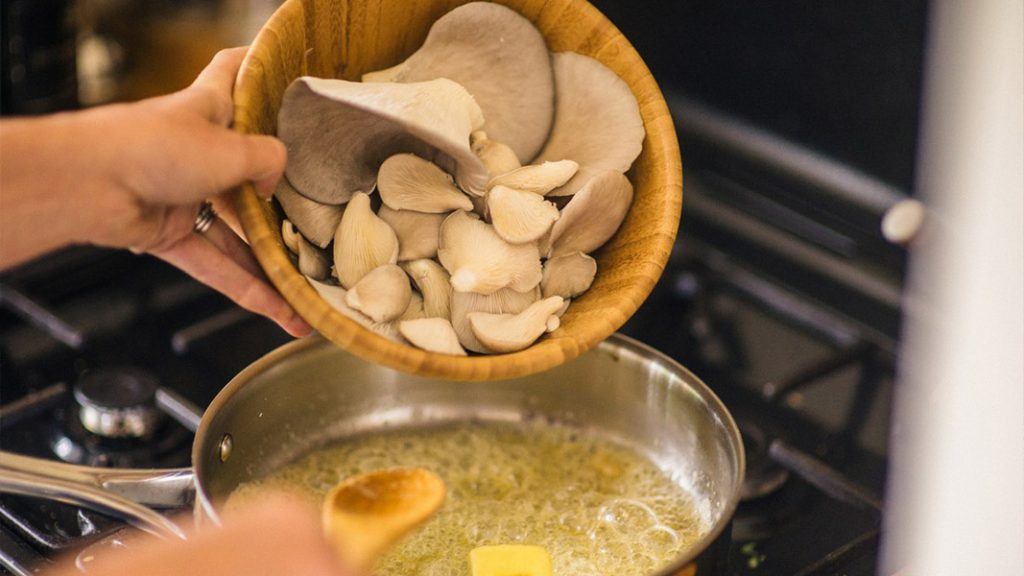Flavor guide Mushroom farm Cooking

Many Americans grew up knowing mushroom farm as either a fixing on their pizza or a fixing in a container of Campbell’s soup. As more assortments of forte and connoisseur mushrooms are being developed available to be purchased in supermarkets and ranchers’ business sectors than any time in recent memory, similar to the assortment of mushrooms developed at R&R Cultivation’s metropolitan homestead right outside of Minneapolis, it’s the ideal opportunity to jump into the captivating universe of consumable growths. Here is a manual for the character profiles and uses for seven famous culinary mushrooms.
1. White Button
White buttons are the most broadly burned-through mushroom farm in the United States. Contrasted with wild and connoisseur assortments, white buttons have an incredibly gentle character. They’re additionally flexible and simple to prepare. They can be cut crude and prepared in plates of mixed greens, cured, marinated and barbecued on sticks, breaded and rotisserie or cooked in sauces and pan-sears. As a result of their gentle character, white buttons are improved by sensitive new spices. With a firm surface and the capacity to think that they are in uniform, reduced down segments, these are the most ideal decision for stuffed-mushroom canapés.
2. Cremini
Cremini, white button and portabella are generally similar types of mushroom farm. White buttons are developed the soonest, portabellas are the biggest and generally full grown, and cremini are an earthy colored strain that are reaped in the middle of the two limits. Likewise promoted as child bellas, cremini mushrooms are more thick and delightful than white buttons, however they can be utilized reciprocally in plans. With a low dampness content and profound, intense character, cremini are amazing sautéed in spread and garlic or added to a rich, smooth Alfredo sauce, hamburger Stroganoff, polenta or risotto.
3. Portabella
A typical fixing in Italian cooking, portabella mushroom farm are huge, rich and substantial. Cut portabellas are shockingly near steak in taste and surface. They’re frequently used to add profundity to pasta dishes and sauces, and they can sub for meat in tacos and fajitas. Hand-sized portabella covers make the ideal veggie lover substitute for meat patties. They advantage from a short marination prior to setting straightforwardly on the barbecue or speared for kabobs. Stuff them for a principle dish entrée; eliminate the stems, yet don’t dispose of them. Use them to prepare stock for a container sauce, sauce, risotto or soup one more day.
4. Shiitake
Contingent upon how they’re ready, shiitake mushroom farm can have a fragile, substantial or fresh surface. New shiitakes have an appetizing umami flavor and marginally smoky fragrance. Most shiitakes are developed, however they can likewise be scavenged from different trees, particularly oak, in nature. They can be eaten crude, however their covers will quite often be extreme, and their stems are exceptionally stringy and woody, so eliminate these and use for stock or to mature. They’re appropriate to a scope of foods and can be broiled, seared, sautéed, added to soups, tossed on a pizza or utilized as a meat substitute in vegan dishes.
5. Shellfish
Shellfish mushrooms have a delicate consistency and gentle, briny character that, when cooked, is somewhat suggestive of fish. While they can be found in bunches on spoiling logs and dead trees, they’re additionally among the most usually developed mushroom assortments. Clams are not the best possibility to eat crude as they are known to have a somewhat metallic character. Yet, cooked shellfish mushrooms are very adaptable and can be fill in for white, cremini and shiitake in many plans. Fast and simple to get ready, they make a delightful expansion to pasta, risotto, miso soup and pan-sears.
6. Maitake
Otherwise called hen of the forest, maitake mushrooms have a gritty fragrance, woodsy character and one of a kind, wispy, yet firm surface. They can be developed or searched in the wild, where they’re frequently observed filling in huge bunches at the foundation of oak trees in pre-fall and late-summer. Maitake can be utilized crude, cooked or dried to add umami to soups and sauces. The most straightforward way of appreciating them is sautéed in spread, garlic and white wine.
7. Enoki
Generally utilized in the cooking styles of Japan, China and Korea, enoki mushrooms have a fresh and somewhat crunchy surface and sensitive character. Wild assortments structure firmly pressed bunches on debris, elm, mulberry and persimmon trees and become brilliant to brown, while financially created enoki are white from being filled in obscurity. They’re accessible canned, however they can likewise be eaten crude which adds a great smash to ramen and different soups, mixed greens and sandwiches and wraps.





